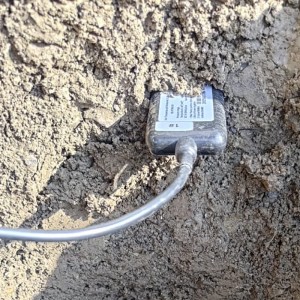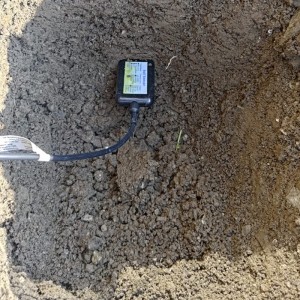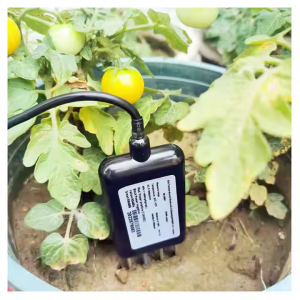In the traditional agricultural model, farming is often regarded as an art that “depends on the weather”, relying on the experience passed down from ancestors and the unpredictable weather. Fertilization and irrigation are mostly based on feelings – “It’s probably time to water”, “It’s about time to fertilize”. This kind of extensive management not only conceals huge waste of resources but also restricts breakthroughs in crop yields and quality.
Nowadays, with the wave of smart agriculture sweeping in, all of this is undergoing fundamental changes. The first and most crucial step towards smart agriculture is to equip your farm with “eyes” and “nerves” – a precise soil monitoring system. This is no longer an optional high-tech embellishment, but an urgently needed item for modern farms to improve quality, increase efficiency, reduce costs and achieve sustainability.
I. Say Goodbye to “Feeling” : From Vague Experience to Precise Data
Have you ever encountered the following predicaments?
Even though water has just been applied, the crops in some plots still seem dry?
A large amount of fertilizer was applied, but the output did not increase. Instead, there were even cases of burning seedlings and soil compaction?
Unable to predict droughts or floods, can only passive remedial measures be taken after disasters occur?
The soil monitoring system can completely change this situation. Through soil sensors buried at the edges of fields, the system can continuously monitor the core data of different soil layers 7×24 hours a day.
Soil moisture (water content) : Accurately determine whether the roots of crops are short of water or not, and achieve on-demand irrigation.
Soil fertility (NPK content) : Clearly grasp the real-time data of key elements such as nitrogen, phosphorus and potassium to achieve precise fertilization.
Soil temperature: It provides a crucial temperature basis for sowing, germination and root growth.
Salt content and EC value: Effectively monitor soil health conditions and prevent salinization.
These real-time data are directly sent to your computer or mobile phone APP through Internet of Things technology, allowing you to have a thorough understanding of the “physical condition” of hundreds of acres of farmland without leaving your home.
Ii. Four Core Values Brought by the Soil Monitoring System
Precise water and fertilizer conservation directly reduces production costs
Data tells us that the waste rate of traditional flooding irrigation and blind fertilization may be as high as 30% to 50%. Through the soil monitoring system, variable irrigation and variable fertilization can be achieved. Only the required amount of water and fertilizer should be applied at the required place and time. This means a direct increase in profits in today’s context where the cost of water and fertilizer is constantly rising.
Increase crop yields and quality to boost profits
The growth of crops is most about “just right”. By avoiding excessive drought or waterlogging, overnutrition or insufficiency and other stresses, crops can grow in the best environment. This not only significantly increases the output, but also makes the appearance of the products uniform, enhances the intrinsic qualities such as sugar content and color, and thus enables them to fetch a better price in the market.
Warn of disaster risks and achieve proactive management
The system can set early warning thresholds. When the soil moisture level drops below the drought threshold or exceeds the flood threshold, the mobile phone will automatically receive an alert. This enables you to shift from “passive disaster relief” to “active disaster prevention”, taking irrigation or drainage measures in a timely manner to minimize losses.
Accumulate data assets to provide support for future decision-making
The soil monitoring system generates a huge amount of planting data every year. These data are the most valuable assets of the farm. By analyzing historical data, you can plan crop rotation more scientifically, screen the best varieties, and optimize the agricultural calendar, making the operation and management of the farm increasingly scientific and intelligent.
Iii. Taking the First Step: How to Choose the Right System?
For farms of different scales, the configuration of soil monitoring systems can be flexible and diverse
Small and medium-sized farms/cooperatives: They can start from the core monitoring of soil temperature and humidity to solve the most critical irrigation problem, which requires a small investment and yields quick results.
Large-scale farms/agricultural parks: It is recommended to build a complete multi-parameter soil monitoring network and integrate meteorological stations, unmanned aerial vehicle remote sensing, etc., to form an all-round “agricultural brain” and achieve comprehensive intelligent management.
Conclusion: Investing in soil monitoring is investing in the future of the farm
Today, with increasingly tight land resources and constantly rising environmental protection requirements, the path of refined and sustainable agriculture is an inevitable choice. Soil monitoring systems are no longer an unattainable concept but have become mature and increasingly affordable practical tools.
It is a strategic investment in the future of the farm. This first step represents not only an upgrade in technology but also an innovation in business philosophy – from “guessing based on experience” to “making decisions based on data”. Now is the best time to equip your farm with “eyes of wisdom”.
For more soil sensor information, please contact Honde Technology Co., LTD.
WhatsApp: +86-15210548582
Email: info@hondetech.com
Company website: www.hondetechco.com
Post time: Sep-25-2025




